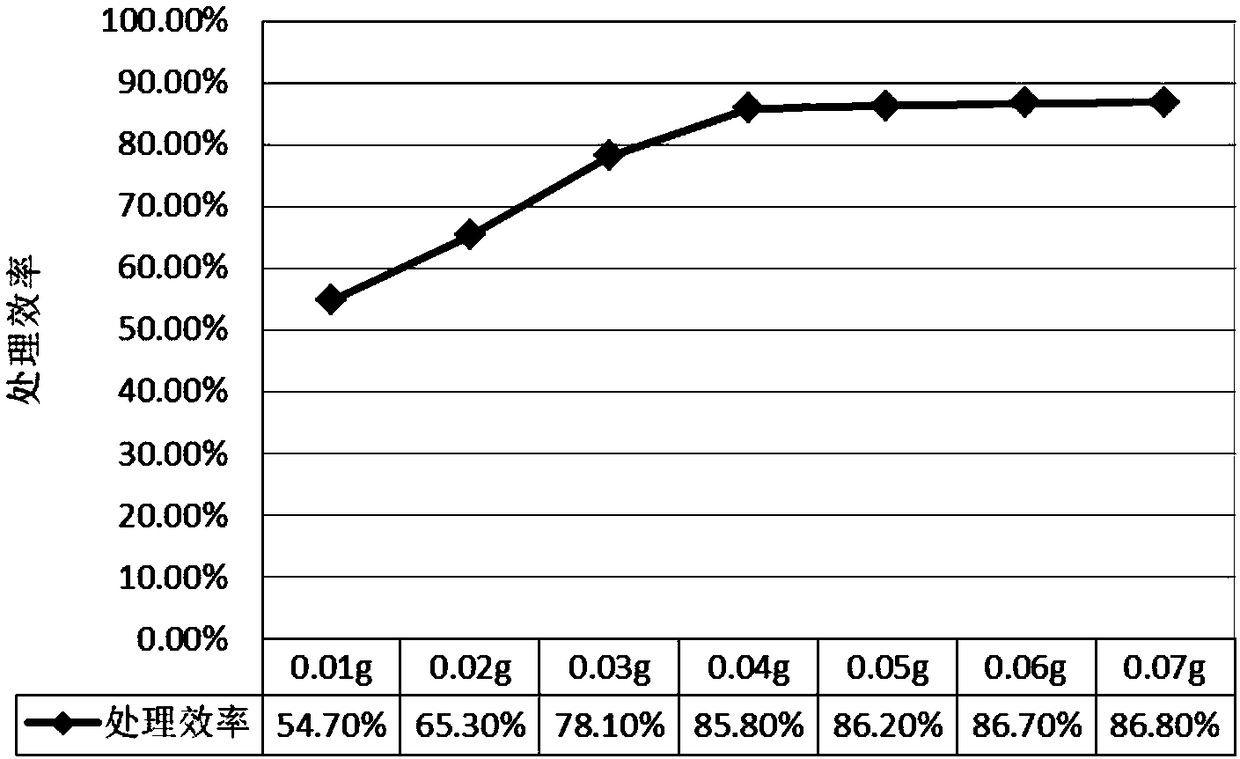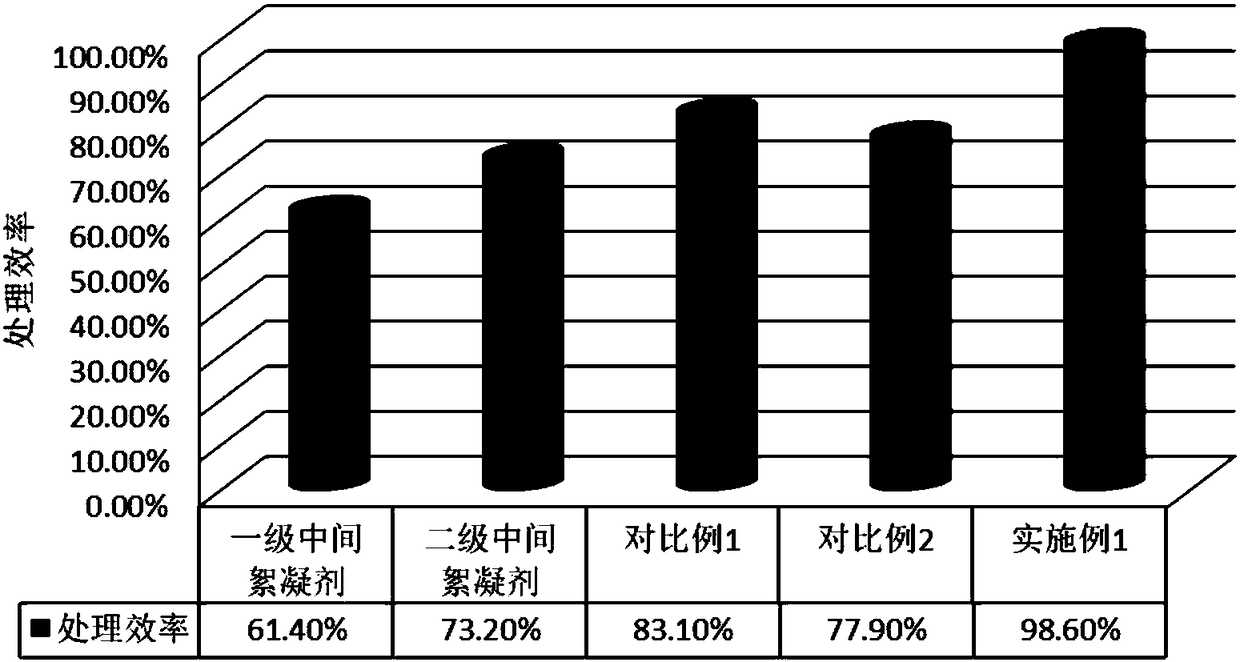Microbial flocculating agent for phosphorus removal, and preparation method and application thereof
A microbial flocculant and floc-producing bacteria technology, applied in the direction of microorganism-based methods, biochemical equipment and methods, microorganisms, etc., can solve the problems of high cost of chemical agents and limited application, and achieve low cost, good phosphorus removal effect, The effect of improving raw material utilization and production efficiency
- Summary
- Abstract
- Description
- Claims
- Application Information
AI Technical Summary
Problems solved by technology
Method used
Image
Examples
Embodiment 1
[0043] The preparation method of a kind of microbial flocculant of the present embodiment comprises:
[0044] 1. Activated bacteria
[0045] (1) Inoculate Mucor genevensis CGMCC 3.4901 in sterilized bran medium and culture at 28°C for 5 days. The number of spores of Mucor genevensis in the culture exceeds 10 8 Individual / gram culture, get Geneva mucormycosis agent, stand-by.
[0046] (2) Inoculate Streptomyces pallidus CGMCC4.1384 in the sterilized Gaoshi No. 1 slant medium, cultivate it at 30°C for 7 days, and inject sterile water with glass beads into the test tube slant , after fully oscillating, filter into a single spore suspension, use photoelectric turbidimetry to detect the number of spores, and make the number of spores 10 9 individual / mL spore suspension for use.
[0047] (3) Inoculate Clostridium cellulolyticum (Clostridium cellulolyticum) ATCC35319 into a sterilized 250mL anaerobic bottle containing 100mL DCB-1 medium (containing 5.0g / L crushed corn stalks), and...
Embodiment 2
[0057] 1. Activated bacteria
[0058] (1) Inoculate Trichoderma reesei (Trichoderma reesei) CGMCC3.3711 in sterilized bran medium, and culture it at 28°C for 5 days, and the number of spores of Mucor Geneva in the culture exceeds 10 8 When individual / gram culture, obtain Trichoderma reesei fungal agent, stand-by.
[0059] (2) Inoculate Streptomyces spororaveus CGMCC4.5873 in the sterilized Gaoshi No. 1 slant medium, and after culturing at 30°C for 7 days, inject sterile glass beads with glass beads into the test tube slant. After fully shaking the water, filter it into a single spore suspension, use photoelectric turbidimetry to detect the number of spores, and make the number of spores 10 9 individual / mL spore suspension for use.
[0060] (3) Inoculate Clostridium cellulolyticum (Clostridium cellulolyticum) ATCC35319 into a sterilized 250mL anaerobic bottle containing 100mL DCB-1 medium (containing 5.0g / L crushed corn stalks), and culture at 35°C for 3 days , collect the b...
Embodiment 3
[0069] 1. Activated bacteria
[0070] (1) Inoculate Rhizopus oryzae (Rhizopus oryzae) CGMCC 3.5818 in sterilized bran medium and culture at 28°C for 5 days. The number of spores of Mucor Geneva in the culture exceeds 10 8 When individual / gram culture, obtain Trichoderma reesei inoculant, stand-by.
[0071] (2) Inoculate Streptomyces lateritius CGMCC4.1427 in the sterilized Gaoshi No. 1 slant medium, cultivate it at 30°C for 7 days, and inject sterile water with glass beads into the test tube slant , after fully oscillating, filter into a single spore suspension, use photoelectric turbidimetry to detect the number of spores, and make the number of spores 10 9 individual / mL spore suspension for use.
[0072] (3) Inoculate Clostridium cellulolyticum (Clostridium cellulolyticum) ATCC35319 into a sterilized 250mL anaerobic bottle containing 100mL DCB-1 medium (containing 5.0g / L crushed corn stalks), and culture at 35°C for 3 days , collect the bacteria, and make a concentration ...
PUM
 Login to View More
Login to View More Abstract
Description
Claims
Application Information
 Login to View More
Login to View More - R&D
- Intellectual Property
- Life Sciences
- Materials
- Tech Scout
- Unparalleled Data Quality
- Higher Quality Content
- 60% Fewer Hallucinations
Browse by: Latest US Patents, China's latest patents, Technical Efficacy Thesaurus, Application Domain, Technology Topic, Popular Technical Reports.
© 2025 PatSnap. All rights reserved.Legal|Privacy policy|Modern Slavery Act Transparency Statement|Sitemap|About US| Contact US: help@patsnap.com



